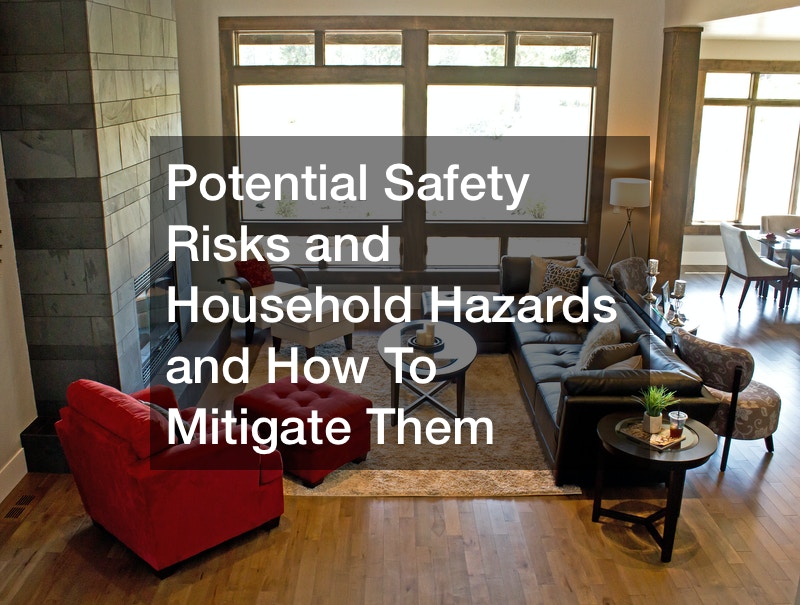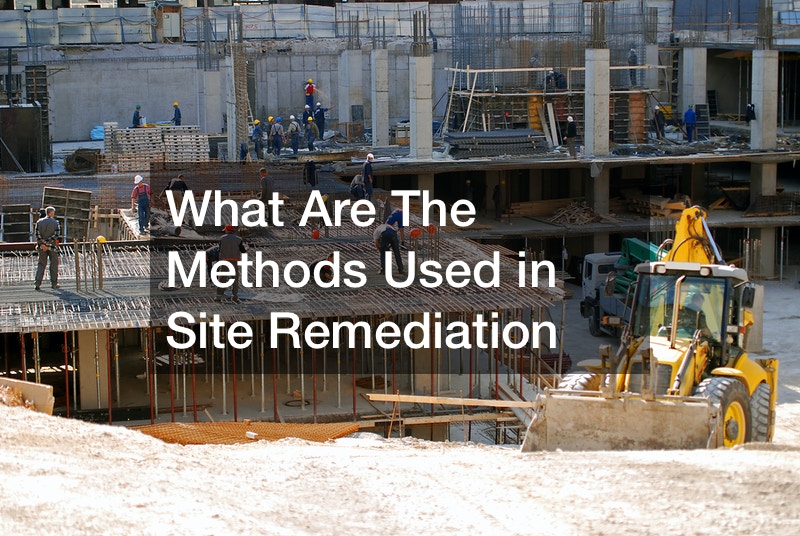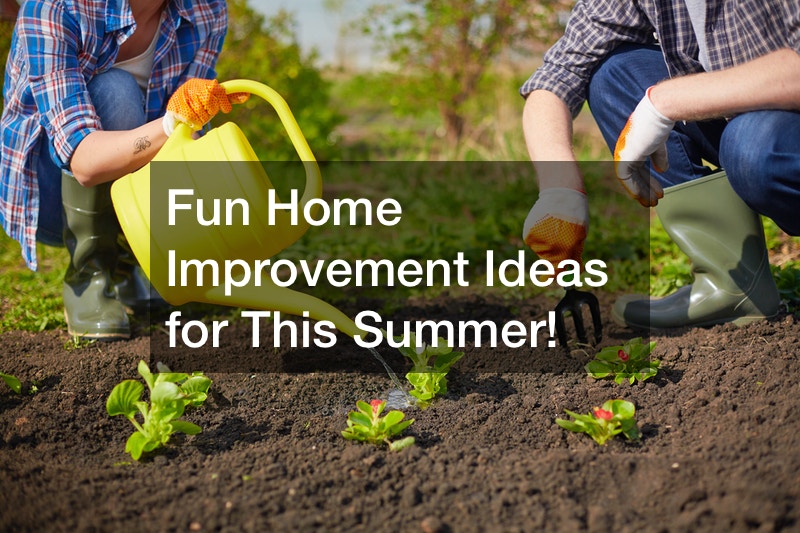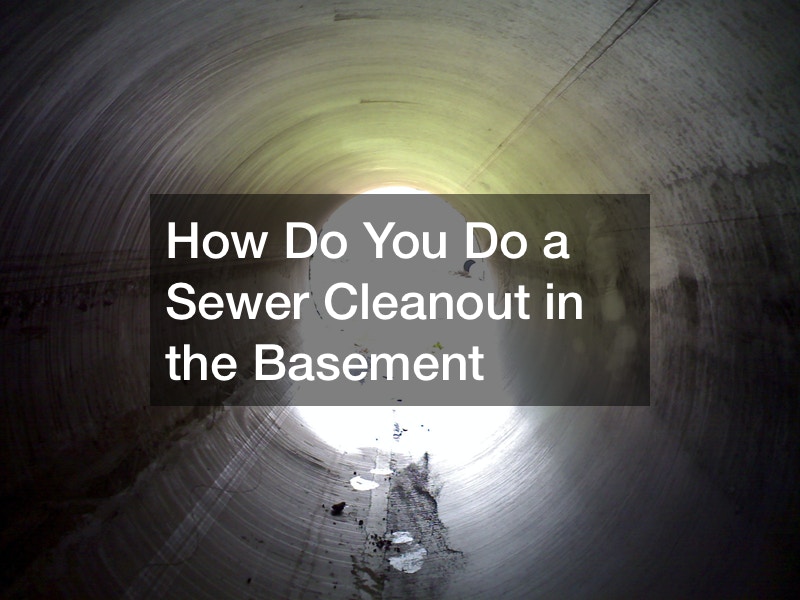
Potential safety risks and household hazards can exist in any home. It’s important to be aware of these risks and take steps to mitigate them. In this article, we will seek to answer the question; What are potential safety risks and household hazards? We’ll also discuss some ways to mitigate these risks.
1. A Poorly Maintained HVAC System

Have you been wondering what are potential safety risks and household hazards? One potential hazard is a poorly maintained HVAC system. If your HVAC system isn’t properly maintained, it can lead to several problems. First, it can lead to indoor air quality issues. Secondly, it can be a fire hazard. Third, it can be a source of carbon monoxide poisoning.
There are a few things you can do to mitigate these risks. First, make sure to have your HVAC system regularly serviced by a professional air conditioning repair company. Secondly, know when it is time to replace your system. Sometimes this is the only way to ensure that you do not compromise your family’s safety.
2. Clutter
Another potential hazard in the home is clutter. Clutter can lead to many safety risks, including trips and falls, fires, and injuries from tripping on objects.
There are a few things you can do to mitigate these risks. First, keep your home clean and organized. This will help minimize the chances of accidents happening. Second, get rid of things you don’t need. This will create more space and make it easier to keep your home clean. Third, use storage solutions to organize your belongings. This will help keep everything in its place.
3. Electrical Hazards
When asked what are potential safety risks and household hazards? Many people might immediately think of electrical hazards. Here is a look at some of the common ones:
Exposed electrical wires: Exposed electrical wires are among the most serious electrical hazards. They can cause shocks, burns, and even fires. If you see exposed wires in your home, call an electrician immediately to have them fixed.
Overloaded circuits: This happens when too many appliances or devices are plugged into one circuit. It can cause circuit breakers to trip or damage electrical equipment. Be sure to only plug what’s recommended into each outlet and don’t overload circuits.
Unsafe outlets: Outlets that aren’t grounded properly or missing a cover plate can be dangerous. If you have any unsafe outlets, have them fixed by an electrician.
Water and electricity don’t mix: It’s important to keep electrical devices and appliances away from water. This includes avoiding using them in damp or wet areas, such as bathrooms or pools. If water comes into contact with an electrical device, it can cause shocks or electrocution.
4. Damaged or Compromised Roofs
Another potential safety hazard is a damaged or compromised roof. This can be caused by severe weather, such as high winds or hail. It can also be caused by falling trees and branches or by age and wear. A damaged roof can lead to leaks, which can cause water damage, mold, and other problems inside your home. This is why roof repairing and maintenance are so important.
Unfortunately, not all types of roof damage can be repaired. In some cases, such as when a tree falls on your roof, or the cost of repair is too high, then you’ll need a new roof installation. Ensure you work with a reputable roofing contractor to get the job done right.
5. Foundation Problems
A third potential household hazard is foundation problems. These can be caused by various factors, such as soil erosion, poor construction, and tree roots. Foundation problems can lead to structural damage in your home and even collapse. They’re also a major contributor to water infiltration, which can cause extensive damage. If you think you might have a foundation problem, have a professional inspect your home.
In addition to undertaking foundation repairs, you can also take steps to prevent foundation problems from recurring. These include ensuring your gutters are clean and in good condition, directing downspouts away from your foundation, and grading the soil around your home, so it slopes away from the foundation. It is also important to remove any trees or shrubs that are too close to your foundation as their roots can cause problems.
6. Damaged and/or Dirty Chimney

Another hazard to be aware of is a damaged and/or dirty chimney. A chimney can become damaged by age, wear, weather, or animal nests. It can also become clogged with soot and debris. A dirty or damaged chimney can cause fires, carbon monoxide poisoning, and other problems. That’s why it’s important to have your chimney inspected and cleaned by a professional chimney cleaner regularly.
You can also take steps to prevent damage to your chimney. For instance, you can have a cap installed to keep animals and debris out. You should also make sure there are no cracks or holes in the chimney. If you have a wood-burning fireplace, ensure the chimney is properly lined and insulated.
7. Radon
Radon is a colorless, odorless, and tasteless gas that can be found in homes. It’s produced by the breakdown of uranium in soil, rock, and water. Radon can enter your home through cracks in the foundation or other openings. Once inside, it can build up to dangerous levels. Radon is the leading cause of lung cancer in nonsmokers and is responsible for thousands of deaths each year.
If you think you may have a radon problem, have your home tested. There are two types of tests: short-term and long-term. According to the CDC, short-term tests measure the average radon levels in your home over two to 90 days. Long-term tests measure the average radon levels over more than 90 days.
If you have high levels of radon, there are ways to reduce it. These include sealing cracks in your foundation, installing a radon mitigation system, and ventilating your home.
8. Damaged Decks
Ask any deck companies what are potential safety risks and household hazards? They’ll likely tell you that damaged or rotting decks are a major hazard. Decks can become damaged by age, weather, insects, and rot. They can also be poorly constructed. Damaged or rotting decks can collapse, leading to injuries or even death.
If you have a deck, it’s important to inspect it regularly for damage and rot. If you find any, have it repaired or replaced immediately. You should also take steps to prevent deck damage, such as sealing the deck every few years, inspecting the fasteners regularly, and ensuring that you do not over-load it.
9. Slip and Fall Accidents

Ask any homeowner what are potential safety risks and household hazards that they are most afraid of, and a good number will say ‘falls.’ Slips and falls are the leading cause of injuries in the home, especially for seniors.
There are several ways to prevent falls in the home. These include removing tripping hazards, such as rugs and cords, and ensuring that there is adequate lighting. You should also make sure that you dry wet floors and wear shoes with good traction. If you are elderly or have a medical condition that makes you more susceptible to falls, you may want to have grab bars installed in bathrooms and other areas where falls are more likely to occur. You should also buy anti-slip mats for your bathtub and shower.
If you or a loved one does fall, it’s important to seek medical attention right away. Remember, even if the fall doesn’t seem serious, it can still lead to serious injuries.
10. Dirty Surfaces
Ask any parent what are potential safety risks and household hazards, and they’ll likely tell you that one of the biggest hazards for kids is dirt and dust. Dirty surfaces can cause a number of problems, including allergies, asthma, and respiratory infections. They can also lead to skin irritations and rashes.
It’s important to clean surfaces regularly, especially in high-traffic areas. You should also use a damp cloth to wipe down surfaces after being touched by dirty hands or food. It’s also a good idea to vacuum and mop your floors at least once a week.
If you have young children, it’s important to take extra care to keep their play areas clean. This means cleaning toys regularly and making sure that there is no dirt or dust in their cribs or beds.
You should also avoid using harsh chemicals to clean surfaces. These can be harmful to your health and the environment. Instead, opt for natural cleaning products.
You should also hire cleaning companies to clean your home regularly. They will know what are potential safety risks and household hazards and how to deal with them effectively.
11. Poorly Maintained Appliances
Another common household hazard is poorly maintained appliances. Appliances that are not properly maintained can cause fires, gas leaks, and electrical shocks.
It’s important to have your appliances inspected and serviced regularly. You should also ensure that they are in good working order before you use them. If you notice any problems with your appliances, such as sparks or strange noises, discontinue use immediately and have them repaired.
You should also keep an eye on your children around appliances and teach them what to do if they see something wrong. Never leave children unsupervised near an appliance.
12. Chemicals and Toxins

Many household products contain chemicals and toxins that can harm your health. These include cleaning products, antifreeze, paints, pesticides, among others. It’s important to read the labels on these products and follow the instructions carefully.
It’s also important to store these products in a safe place, out of the reach of children and pets. You should also make sure that you dispose of them properly. Never pour chemicals down the drain or put them in the garbage. If you use them frequently, you may want to consider wearing gloves or a mask to protect yourself from exposure.
13. Gas Leaks
Gas leaks are another potential safety hazard in the home. They can be caused by faulty appliances, cracked pipes, or other problems. Gas leaks can be very dangerous because they can lead to fires and explosions. If you smell gas in your home, open all the windows and doors to ventilate the area. Then call your gas company or a plumber to fix the leak. Never try to fix a gas leak yourself! This is a job for professionals.
14. Carbon Monoxide Poisoning
Carbon monoxide is an odorless, colorless gas that can be deadly. It’s important to have a carbon monoxide detector in your home and to know the symptoms of carbon monoxide poisoning, which include headache, dizziness, nausea, and fatigue. If you suspect you or someone in your home has carbon monoxide poisoning, get to fresh air immediately and call 911.
There are several causes of carbon monoxide poisoning, including:
A faulty furnace: A furnace that isn’t working properly can produce high levels of carbon monoxide. If you suspect your furnace is malfunctioning, have it inspected by a heating repair professional.
Blocked chimneys or vents: If your chimney or vents are blocked, it can cause carbon monoxide to build up in your home. Have them inspected and cleaned regularly by a licensed and insured vent cleaning company to prevent this from happening.
Running cars in an attached garage: Running a car in an attached garage can cause carbon monoxide to seep into your home. Don’t do this, and make sure to keep your garage door open when the car is running to ventilate the area.
Using gas-powered generators: Gas-powered generators produce carbon monoxide, so they should never be used indoors. If you need to use one, make sure it’s at least 20 feet from your home and any doors or windows that might be open.
What are Potential Safety Risks and Household Hazards?
As you have seen while trying to answer the question of what are potential safety risks and household hazards, there are many dangers lurking in our homes. It’s important to be aware of these dangers and take steps to mitigate them. It’s the only way to ensure that you and your family remain safe and healthy.



